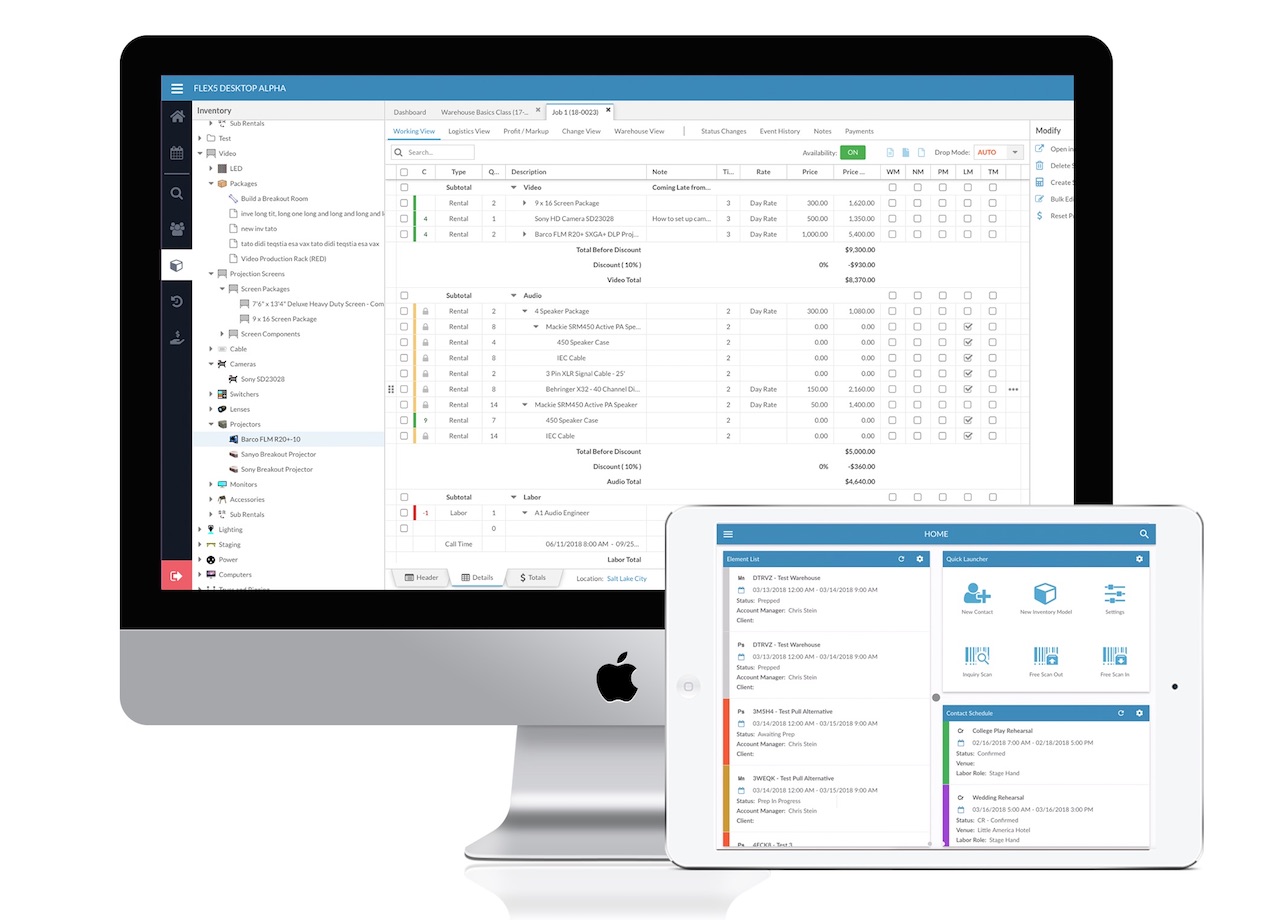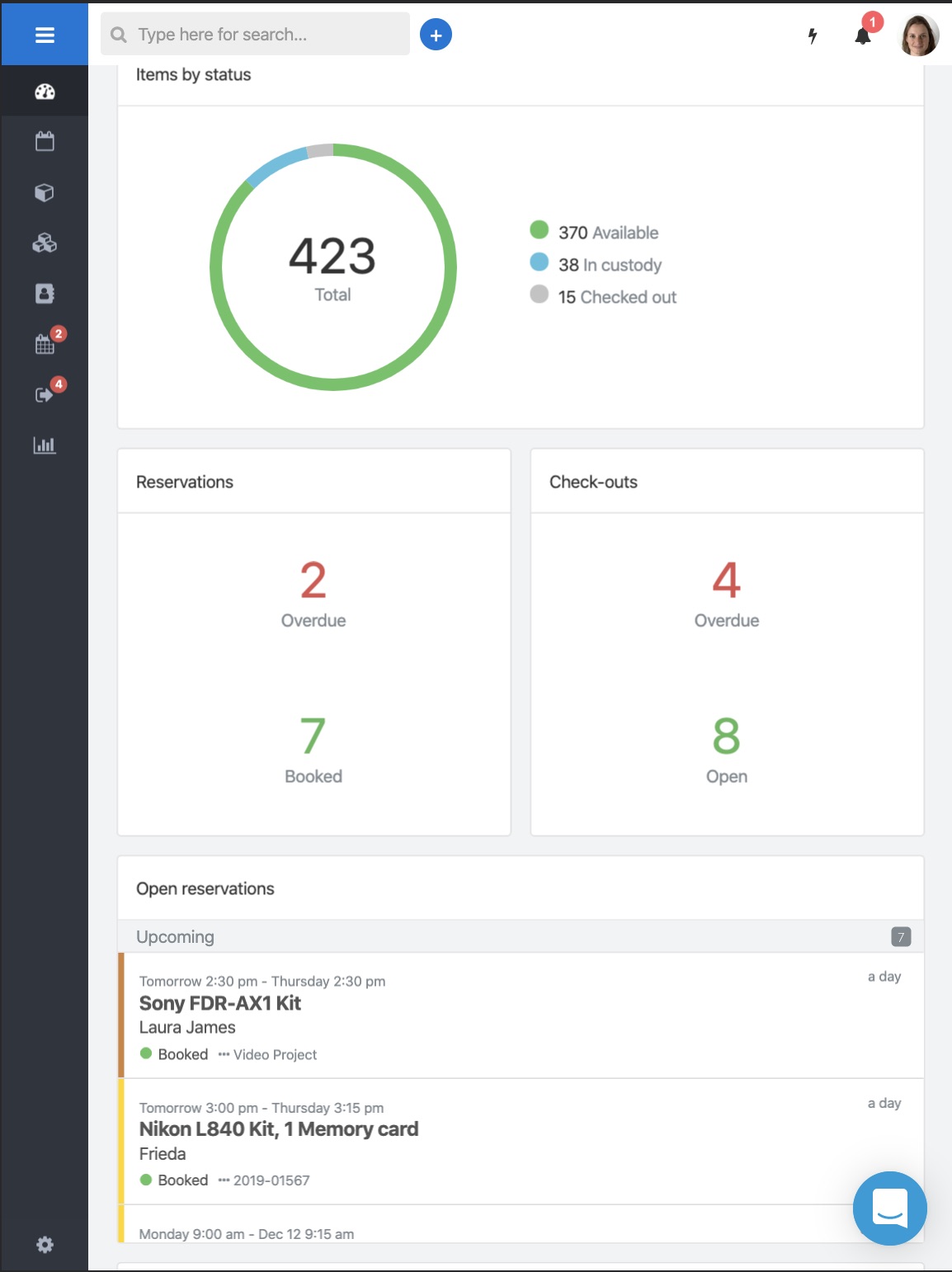Managing inventory may not be the most glamorous task on an AV/IT tech manager’s agenda, but few would debate its necessity. At the enterprise level, as well as in higher education, solid asset tracking processes not only serve to locate tech and give insight into the state it’s in, they also contribute to the optimization of purchasing, financing, and ROI. While many organizations continue to struggle with outdated systems that don’t necessarily give tech managers the full picture, several platform developers offer solutions that allow for a more efficient approach to inventory management.
Hardcat, headquartered in South Melbourne, Australia with U.S. headquarters in Carson City, NV, addresses this with a comprehensive set of tools for asset and maintenance management, mobile tracking, asset depreciation, as well as purchasing and procurement. The developer also has a specialized offering for government and law enforcement agencies that streamlines the management of property and evidence. Assets can be tagged and tracked via barcodes, RFID, QR codes, and NFC.
Related: Rethinking UX Design for Today's World
Developed by Flex Rental Solutions based in Orem, UT, Flex GTS (Gear Tracking Solution) is a cloud-based platform designed to streamline asset management. Featuring barcode and RFID scanning support, the software provides asset control and location management, maintenance tracking and task management, and pullsheets tailored to a specific project or site. Flex GTS also incorporates a contact manager for quick access to employees, customers, vendors, and venues.

“At the core, we’re tracking assets or resources—whether those resources are speakers, or laptops, or people,” said Chris Stein, CEO at Flex Rental Solutions. “And whether you’re looking to track them for a customer who is external to you, or inventory that is internal, [you need to know] who has which asset.” Traditionally, organizations turned to spreadsheets, which are cumbersome to manipulate and don’t always tell the real story behind the equipment that’s being tracked. “We put together what we hope is a live, dynamic, user-friendly environment where you can track these assets and know what’s where.”
This is especially important in organizations where gear moves around a lot. In a corporate setting, off-site events such as sales demonstrations, training, or trade shows mandate some kind of check-in/checkout model. The same can be said for many applications in higher ed, where both students and faculty need access to AV equipment for specific projects, assignments, and presentations outside of the classroom. “Knowing what you have available and knowing what hasn’t come back is important information,” Stein said. Equally important is remaining up to date on what devices come back requiring repair, he added.
CHEQROOM, a solution designed by a developer of the same name in Ghent, Belgium, features functionality pertaining to equipment booking and scheduling (including automated notifications), checkout/check-in, maintenance, asset tracking and management, and reporting. The web-based software integrates with a mobile app, and an asset tagging system (either QR or barcode-based) enables users to not only track devices, but also gain insight into which items may be temporarily out of service. The company serves a number of vertical markets, including corporate, higher ed, and the broadcast industry.
“[With this solution] people don’t have to worry about their equipment; they can focus on their projects,” said Kevin Boone, marketer at CHEQROOM. “Of course, the equipment is important and you need specific equipment for specific jobs, but you don’t want to have to worry about availability, [or whether or not] it works.”
CHEQROOM also enables the assignment of user roles: “super admins” and equipment managers may have more in-depth access to the system than, say, an end user interested in reserving equipment. This feature also enables an approval process (a professor, for example, may wish to sign off on a student’s reservation), and a signature function can be added for increased accountability. “It’s always a little bit more formal if you have to sign; then you know that you’re linked to this specific checkout and you have to be careful with the equipment,” Boone said.
Boone added that the software’s reporting feature also tracks depreciation, and enables users to monitor the warranties associated with specific items, as well as service contracts. It also provides usage data that helps tech managers determine things like whether it’s worth renewing an equipment lease, if it’s more cost-effective to rent specific items on a one-off basis, or when it makes the most sense to purchase high-demand devices outright.

Stein noted that the COVID-19 pandemic has underlined the need for effective AV equipment tracking, since a lot of corporate AV gear currently resides with organizations’ remote workforces. “There is a lot of traction as far as companies just trying to figure out who’s got what, and where it is,” he said. When everyone was onsite, any problems that arose could be dealt with face to face. “Now no one’s in the office, or only half the people are in the office. [Some organizations] are dealing with furloughed employees and what assets [those individuals] may still have [in their possession]. Those are really big problems these days.”
At CHEQROOM, Boone relayed that customers are adapting the tool’s “Custody” function to keep tabs on gear that is on loan for a prolonged period of time, largely due to work-from-home mandates. “The equipment room [may be] empty, but they still know where their equipment is,” he explained. He added that onsite users are taking advantage of the software’s flagging tool to manage new equipment sanitization practices. “This way the equipment manager knows when a device needs sanitizing, and when that’s done they de-flag [the item]. It helps track which equipment is safe to use, and which is not.”
Matt Huesmann, adjunct professor in the Film and Creative Media Program at Lipscomb University in Nashville, TN, is using CHEQROOM to manage the department’s equipment room, which features an inventory of approximately 700 items. In preparing for the fall, he reconfigured the adjacent waiting room to accommodate new COVID-related health and safety standards. Pick-up and drop-off shelves are numbered, and, via the software’s SMS feature, the student workers who run the equipment room communicate where student users must go to collect their orders.
Huesmann said that this helps to limit physical contact, as well as manage circulation during peak pick-up and drop-off times. “Via the SMS messaging students know that their order’s ready—just like at a restaurant—and pick up the equipment from [their assigned] shelf and walk it out,” he said. “It’s minimizing all the interactions and all that potential, and we can let them know when it’s OK to come in and [pick up or drop off equipment]. That’s why I’ve been really excited about the SMS technology, not only to remind people that their equipment is due, but to control the traffic flow of people in the room.”
According to Stein, Flex Rental Solutions’ customers have scanned over 50 million items over the last year—a testament, he said, to the efficacy of the platform. “What it allows our customers to do is to take that easy, elegant functionality and apply it to a real-world workflow instead of just updating fields in spreadsheets—this is all live and in real time,” he said. “They’re scanning the equipment right as it hits the shop floor or wherever they’re working—the scanners are doing the work for them.”
Carolyn Heinze is a freelance writer/editor.